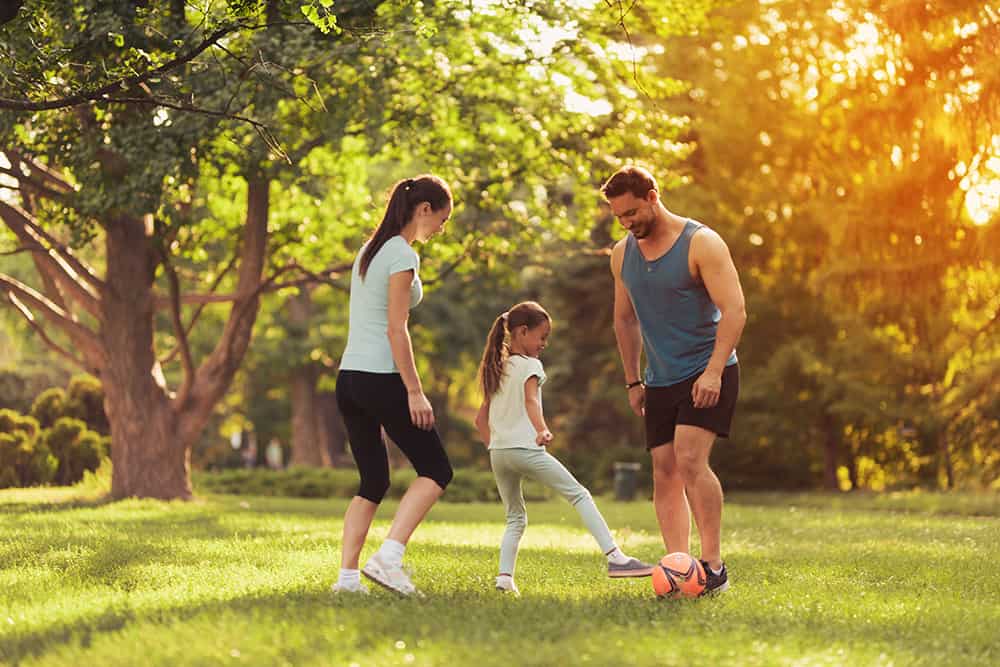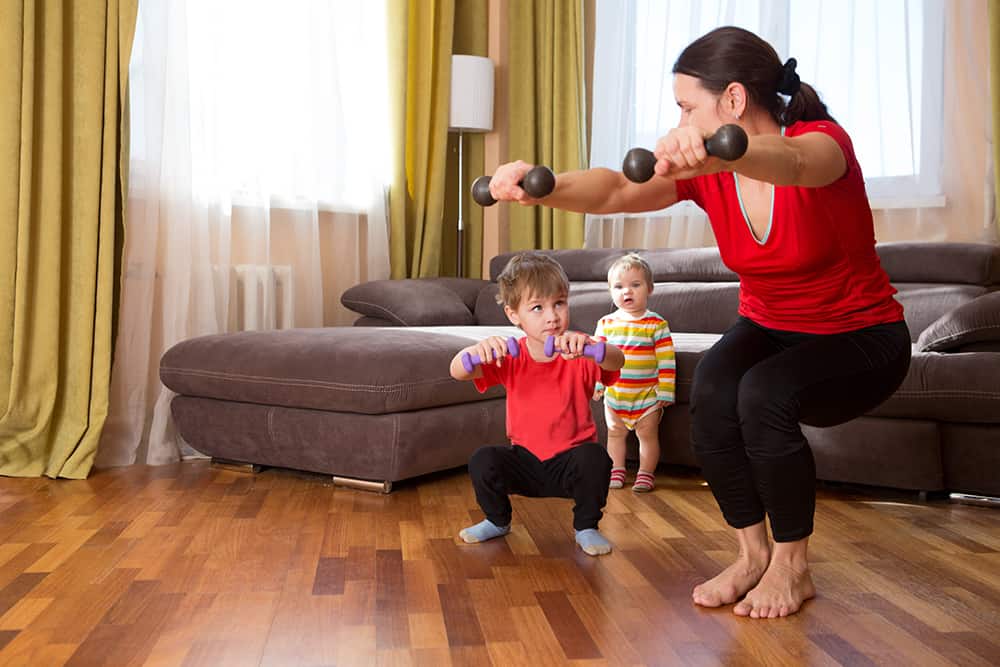25 At-Home Workouts to Do With Your Kids. If you’re a parent, especially of small children, your workout time is limited. So, it’s valuable to find ways to work in solo exercise time, whether it’s early in the morning, late at night, at a gym with a childcare facility, or when a partner, grandparent, or sitter can take charge of the kids. But let’s face it: That doesn’t always happen. But don’t let that derail your fitness goals. You can still exercise while your children are around. Try these kid-friendly activities. Little ones can join in, help out, or just play nearby. Don’t forget to start with a warm-up!
As you juggle work and family, be mindful that research shows active parents raise active children. Fitness should always be a priority in a family’s daily schedule. The American Heart Association recommends that healthy children stay active throughout the day. Children should get at least an hour of moderate to vigorous activity every day. This will help them maintain a healthy weight and keep their hearts, brains, and bodies healthy. So including your kids in your workout is beneficial for both them and you. One of the most important things to realize with kid’s fitness is that it’s okay to move at your own pace, and it’s okay to adjust things in order to make them work best for you. Move as fast or as slow as you need to. It’s also crucial that exercise is fun, this way you are more likely to keep doing it.

1. 25 At-Home Workouts to Do With Your Kids
Snag a fitness timer from the app store on your phone to time your workout. Aim for 40 seconds of work, followed by 10 seconds of rest. Alternate through the activities above and aim for a 30-minute workout. A good warm-up exercise can consist of almost any light to moderate aerobic activity.

Something that gets your child’s body moving but isn’t too physically taxing. A slower, gentler version of the sport she’s about to play is always a good option: brisk walking or jogging to warm up for running. Benefits of a good warm-up include injury prevention and improved performance. That’s thanks to increased blood flow to the muscles, as well as improved range of motion and body temperature control.
